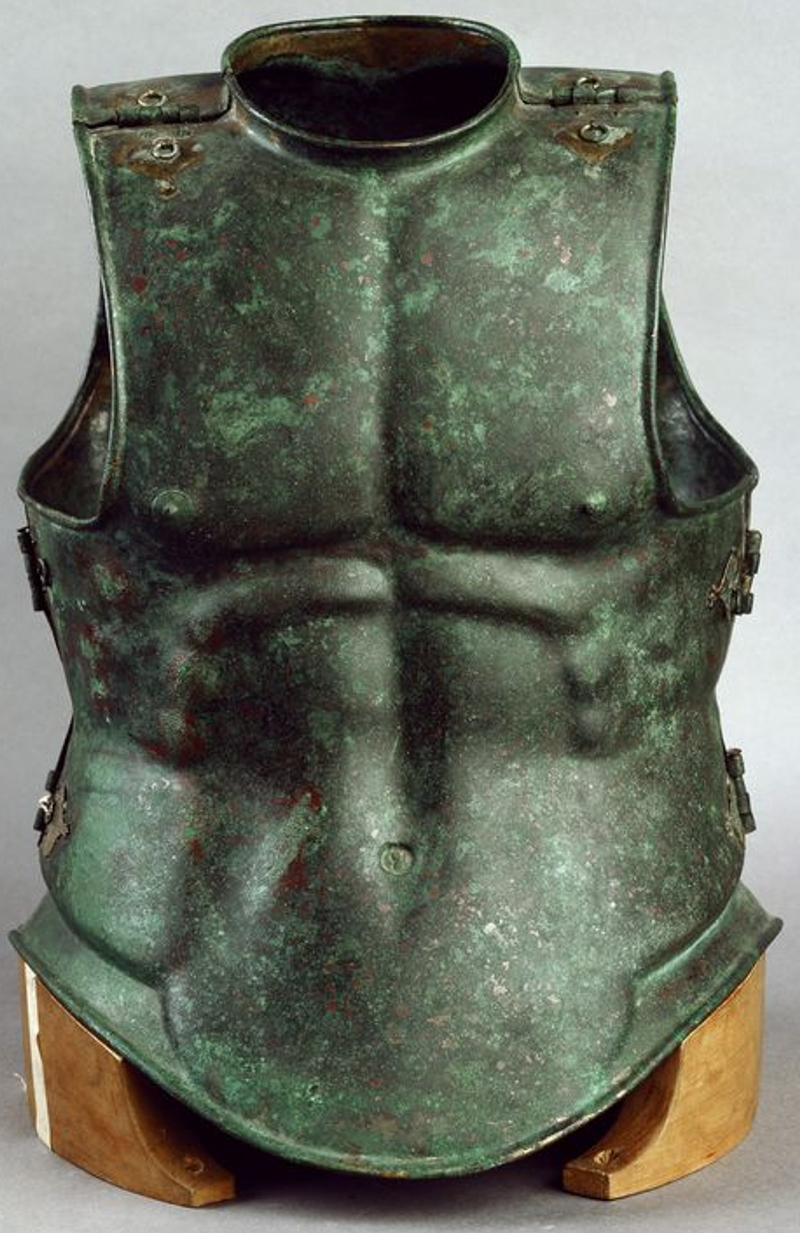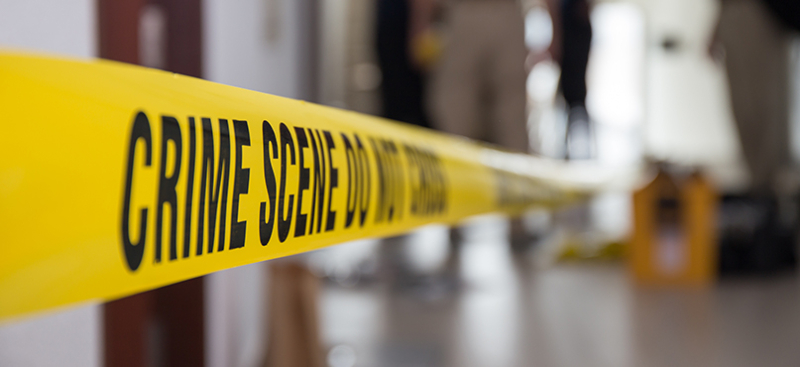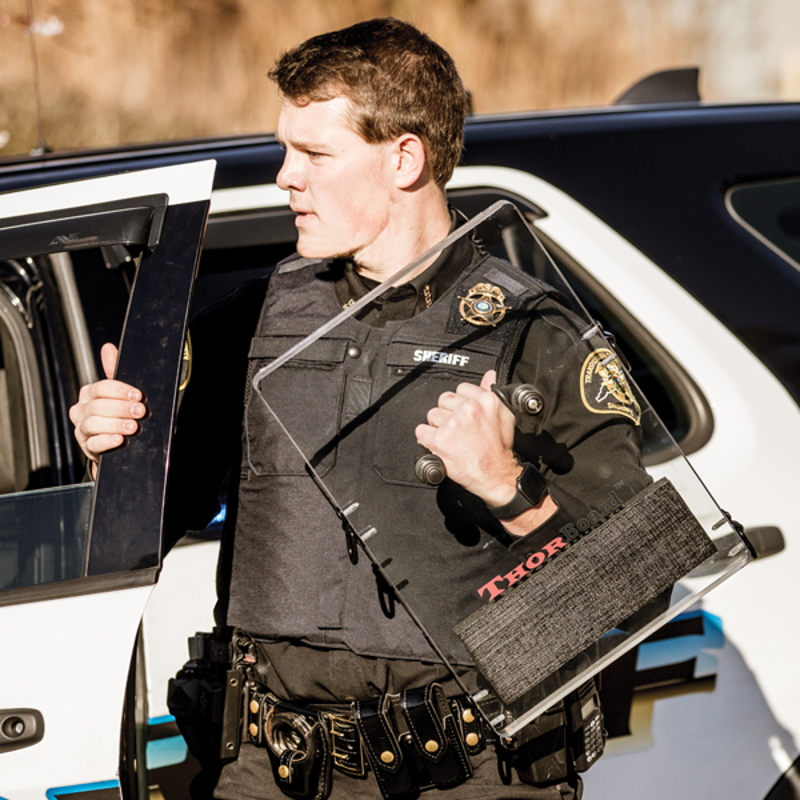Ballistic vests have become part of everyday life, even for those who don’t own one. It’s common to see them being worn by law enforcement officers or members of the military, and even dogs have their own Kevlar now. Have you ever wondered where the vests got their start? In fact, there’s one particular moment in ballistic vest history that has an interesting background: the Second Chance vest. Read on to get an inside look at some gun history not everyone knows.

In the Beginning
Before we get into the Second Chance line, let’s take a moment to appreciate how much time and effort has gone into the ballistic vests people wear today. Technically, what we now call the ballistic or bulletproof vest got its start back in the 1500s. That’s when an Italian captain named Francesco Maria I della Rovere, also the Duke of Urbino at the time, decided he wanted body armor more along the lines of a vest and asked armorer Filippo Negroli to make him one. This was the first of many attempts at creating effective protection against edged weapons and bullets over the centuries, each of which had varying degrees of success.
Something else worth mentioning took place in Tombstone in 1881. A doctor, George Goodfellow, apparently treated a card dealer who had been shot twice. One of the two bullets failed to significantly wound the dealer because it impacted a folded silk handkerchief in the man’s breast pocket. Goodfellow found this fascinating and got to work trying to invent what became the first documented instance of a bulletproof vest. His version used silk, of course—up to 30 layers of it.
It would be almost 100 years before Second Chance ballistic vests—which were not made with silk—came on the scene, and the story behind their creation is a unique one, to say the least.
Pizza Delivery
In the 1960s a man by the name of Rich Davis owned a successful chain of pizza stores in Detroit, Michigan. As time went by, he became concerned with the prevalence of pizza delivery boys being robbed, and, in fact, his wife had been robbed while handling a delivery for the store. After that he’d gotten into reading gun magazines and tried to educate himself in self-defense, a field that really hadn’t developed yet in the 1960s beyond law enforcement members (and even they have come quite a ways since then).
Davis had registered a sawed-off shotgun with the ATF and used it inside a pizza box he’d carry at the bottom of a stack of boxes for the purpose of defense against armed robbers. On the day that altered his life forever, he didn’t have that box with him. What he did have was the only pistol he could afford at that time, a Harrington & Richardson Model 622.

The H&R Model 622 was a 22 LR revolver with a fixed cylinder that could only be taken out of the large frame by pulling a retaining pin. Its cylinder didn’t swing out like more modern designs, so reloading quickly wasn’t possible. The gun was made with various barrel lengths and Davis’ had a 6-inch barrel, along with a big front blade sight. David felt the blade was more problematic than helpful, so he sawed off the front inch of the barrel, creating a pistol that wouldn’t snag when being drawn, but it also had no front sight. He meant to use it as an extremely close-range weapon, though, so he wasn’t concerned.
On the evening that would, in hindsight, be the night Second Chance ballistic vests found their roots, Davis had received an eerily familiar pizza order. Someone called in a “sausage and ham” pizza, which was apparently a strange request. Last time it had been ordered was the night Davis’ wife was robbed and one of her assailants tried to drag her into their vehicle. On that particular night, they were short on drivers, and even if they hadn’t been, Davis knew he’d have to deliver this one himself for safety’s sake.
When he reached the address the caller had given, Davis held the revolver in his hand beneath a dummy pizza box he included with the actual order. If there was a problem, he’d be ready. If it was fine, no harm, no foul. He walked to the front door and noticed the lights were out. Before he could decide what to do, a young man appeared at the side of the house and asked him to carry the pizzas around to the back.

According to Davis, he decided to follow the man because he was concerned he’d end up shot in the back if he tried to leave at that moment. He was aware of a business owner who had recently complied with armed robbers and then been murdered anyway. All his senses were on high alert.
In the back yard, three men stood in a V shape on a raised patch of ground. It was immediately clear he was being robbed.
The two men on either side of the group reached for their waistbands, but the man in the center had already drawn a gun. Davis had a split second to look at him and register that he fit the description of the assailant who tried to drag his wife into a car, and then it happened fast.
In Davis’ retelling, he said he knew he couldn’t get away. His first shot fired in self-defense, from under the pizza box, struck the tall man in the middle of the trio right under the chin. Davis remembers his would-be robber falling backward even as he fired a second shot, and he was mad at himself for wasting a precious round from the revolver.
His third shot missed.
Armed and ready, the robber to his right brought his own gun out, and Davis managed to shoot him once in the shoulder. It wasn’t enough; his attacker kept coming. The fifth shot from the revolver hit the robber, and Davis remembers seeing the attacker’s jacket shift with the impact. Then the man dropped like his strings had been cut (it turned out that bullet hit his spine, instantly paralyzing him).
The sixth and final shot from the revolver grazed the hair of the third assailant, who decided it was a good time to run away.
That’s when Davis himself was shot by the tall man he’d fired at initially. Davis could have been killed, but somehow, luck was on his side. The first 25-caliber bullet broke his glasses and got stuck under the skin of his scalp. As he tried to escape, a second bullet struck his thigh. Still, he managed to get in his car and drive away.
The Aftermath
Rich Davis had survived a gunfight for his life, but he’d learned just what bullets could do to the human body. If he’d owned a larger caliber handgun, his attackers probably would have been dead. Conversely, if they’d had bigger guns, he himself would likely have died from the bullet that, instead, stopped under his skin.
Police arrested the men as they tried to seek medical treatment (there’s more to it than that, but this is the brief version). Interestingly, none of the robbers spent more than a year in prison before being released on probation, despite admitting to armed robbery and shooting Davis.
Second Chance
It was 1969 when Rich Davis was almost murdered by the trio of armed men. By 1971, he did something that impacted ballistic vest history. He decided to come up with a vest to protect people—specifically members of law enforcement—from gunshot wounds.

At that time, ballistic nylon was being used in vests in Vietnam, and Davis decided to try it for vests being made stateside. Of course, the flak jackets the military used were made to stop shrapnel and frequently had steel plates sewn into them, so Davis had to make some changes.
In that era the most common cause of gun-related death for law enforcement officers was bad guys armed with what were then known as Saturday Night Specials. Those were cheap little guns chambered in things like 22 LR, 32 Smith & Wesson, and 38 Special, with 357 Magnum making an occasional appearance. Davis focused his attention on designing a vest capable of stopping those smaller calibers, and he was successful.
From PinShoot.com:
“During the spring of 1972, Richard performed the ultimate test at the Walled Lake, Michigan Police Department shooting range. He crouched down to his knees, donned the vest, pointed a loaded .38 revolver at his chest and said “If this works it could save a thousand men in the next ten years. If it doesn’t, they will die as I will.” Bang! The slug drove into the vest as his chest absorbed all of the trauma just over the left ventricle of his heart. Demonstrating his lack of incapacitation he jumped to his feet and shot the three bowling pins that were set up on the nearby table.”
See it for yourself:
The rest is ballistic vest history. Second Chance ballistic vests saved countless law enforcement lives, but in 2004 Davis decided to resign from his company and filed for bankruptcy. The vests had experienced some failures, which were related to the Zylon used to make them. As it turned out, the Zylon failures were industry-wide, but somehow it was Second Chance that took the brunt of it. In fact, in 2005, the United States government did testing that showed over half the Zylon vests couldn’t stop the bullets they should have. The flaw was with Toyobo, the company behind the production of Zylon. Although there’s a bit more to the story, that covers it in a nutshell.
There is a happy ending to the tale of the man behind modern ballistic vests. In 2005, Richard Davis’ son, Matt Davis, founded Armor Express to produce bulletproof products once again. Today the company provides an enormous number of law enforcement and military agencies with body armor and related gear. The Department of Homeland Security is one of their larger clients.

Inspiration comes from many places, and if Richard Davis had doubted himself back in 1969, who knows when or how ballistic vests and gear would have come along.
Do you have a bulletproof vest? Tell us about it in the comments below.


